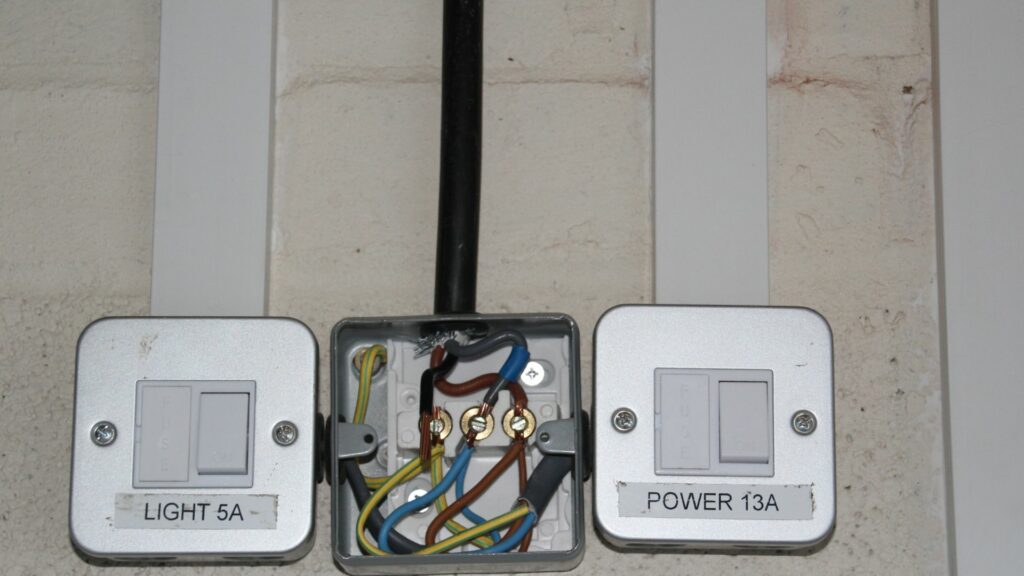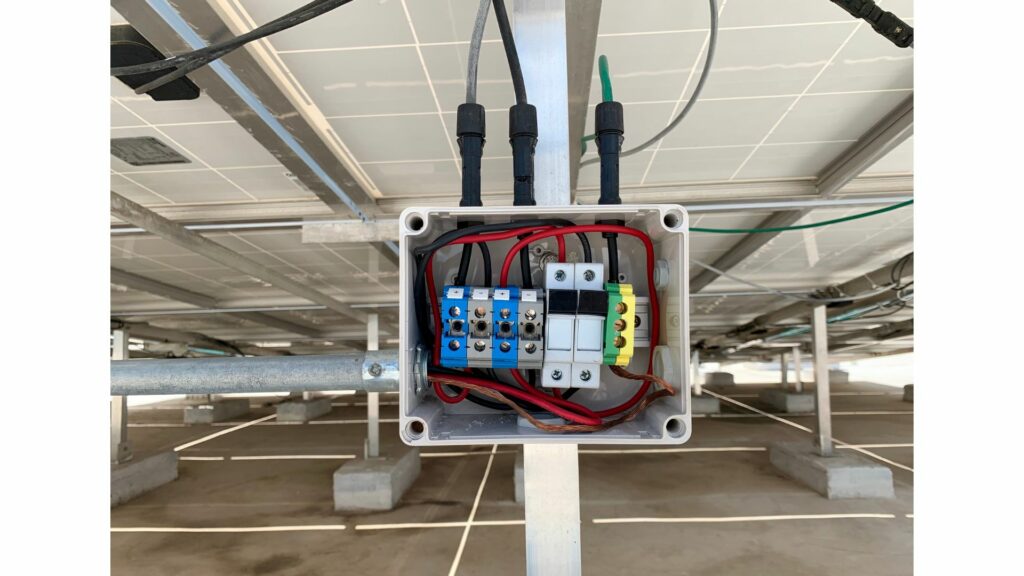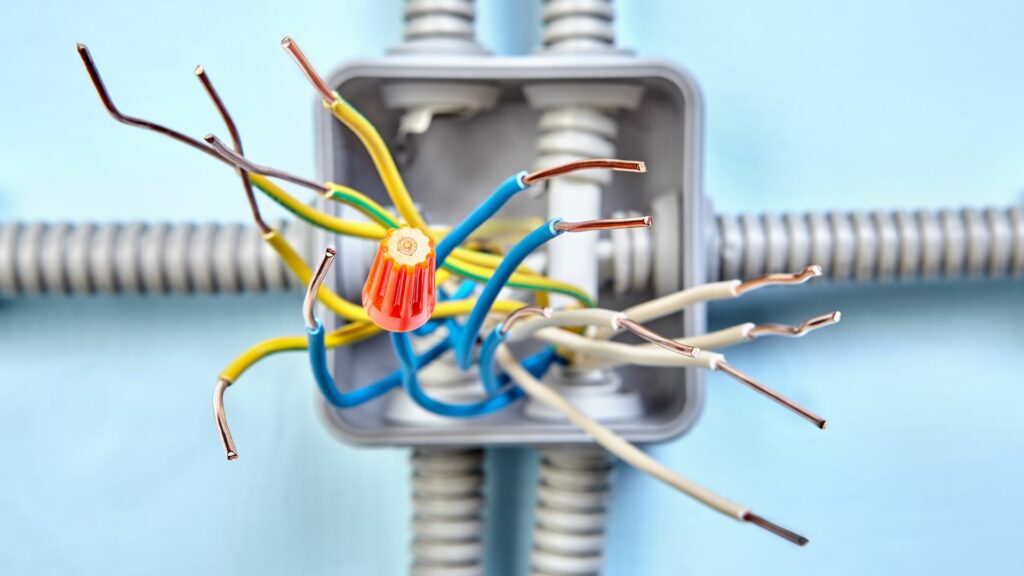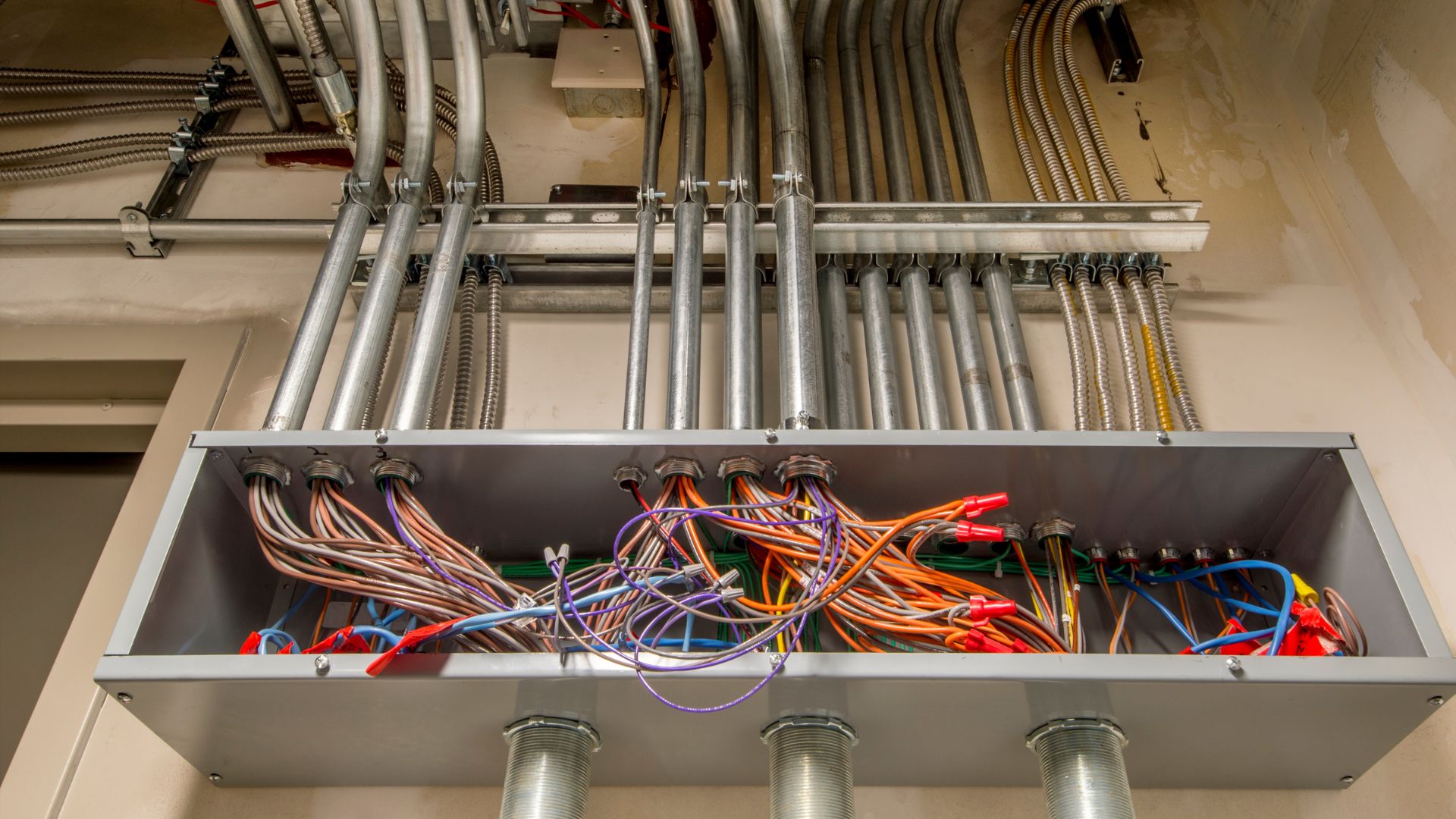Does it make sense to run multiple circuits through the same junction box? How can you defend against the dangers? The guide below will tell you.
Can Multiple Circuits Share A Junction Box? You can run multiple circuits through the same junction box. You cannot leave wiring splices outside an enclosure. This is an NEC rule. Therefore, junction boxes are commonplace in most homes. It makes more sense to use one junction box where possible because it saves space and money.
Naturally, the size matters. The most expensive element of installing a junction box is the labor cost.
The more boxes you must install, the more time the contractor will take and the more money you can expect to pay. Don’t forget that they charge by the hour. Therefore, you are better off finding a box that is large enough to accommodate all your wires.
What Does The Code Say About It?
Article 314 of the NEC reveals various electrical box sizes, their dimensions, and the number of wires they can accommodate.
NEC Table 314.16 (A)
| Box Dimensions (Inches) & Trade Name | Minimum Cu. In. | Max # Conductors AWG 14 | Max # Conductors AWG 12 |
| 3 x 2 x 1 1/2″ Device Box | 7.5 cu. in. | 3 | 3 |
| 3 x 2 x 2 ” Device Box | 10 | 5 | 4 |
| 3 x 2 x 2 1/2″ Device Box | 12.5 | 6 | 5 |
| 3 x 2 x 3 1/2″ Device Box | 18 | 9 | 8 |
| 4 x 2 1/2 x 1 1/2″ Device Box | 10.3 | 5 | 4 |
| 4 x 2 1/2 x 1 7/8″ Device Box | 13 | 6 | 5 |
| 4 x 2 1/2 x 2 1/8″ Device Box | 18 | 7 | 6 |
| 4 x 1 1/4″ square | 18 | 9 | 8 |
| 4 x 2 1/4″ square | 21 | 10 | 9 |
| 4 x 2 1/4″ square | 30.3 | 15 | 13 |
Your biggest concern is selecting a box that is too small. A box that is too big is wasteful, but it won’t harm you in the long run. A small box encourages overcrowding. The wires will rub against one another, damaging the sheathing, revealing the conductors, and producing arcing and short circuits.
You can avoid this issue by identifying a box size that fits the number of cables you want to install. The NEC has tables for each application. For instance, if you wish to wire a receptacle, use the table that tackles receptacles and switches.
How Many Circuits Can Share A Junction Box?

You can add as many junction boxes as you want to a circuit. But if you want a single box to accommodate multiple circuits, the size is your only limitation. You can use as many circuits as you want if the box is large enough to hold them.
Small boxes are dangerous because they compel you to bend the wires, which damages the conductors, leading to arcing. The NEC’s guidelines will show you the appropriate box volume and box fill for your circuits.
(314.16 (A)) from the NEC shows the various electrical box volumes. The table applies to gauges ranging from 18AWG to 6AWG. It also mentions the different types of junction boxes because the type influences the volume and fill.
Table 314.16 (B) will help you determine the junction box fill. The calculations are not easy because you have to consider several factors, including the conductor fill, clamp fill, equipment fill, and more.
NEC Table 314.16 (B)
| CONDUCTOR SIZE | in.3 |
| 18 | 1.50 |
| 16 | 1.75 |
| 14 | 2.00 |
| 12 | 2.25 |
| 10 | 2.50 |
| 8 | 3.00 |
| 6 | 5.00 |
Keep in mind that the junction box will house other items besides the wires, including the bonding jumpers. Adding the values of all the components will give you the box fill, which you can compare to the information in the NEC’s tables to get a better sense of the box size and type you need.
Conductors larger than 6AWG follow a different set of rules because you are more likely to ruin their insulation by forcing the cables into a small junction box. Check 314.28 in the NEC to understand the regulations that influence the junction box sizes for thicker lines.
Once you know the number of wires and components you need, the NEC will guide you.
Although, you may benefit from buying separate junction boxes for different circuits. Mixing multiple circuits in a junction box will create confusion for future electricians, especially when things go wrong, and you hire them to troubleshoot the situation.
Why Use Two Different Circuits In The Same Junction Box?

It is a question of convenience. You can save time and money by using a single junction box to accommodate two different circuits. If you want to hire an electrician, you can also reduce labor costs by cutting down on the number of junction boxes they have to install.
If you already have a junction box, you can save even more time by re-using it as opposed to installing a new box.
Is It Good To Use One Circuit For One Junction Box Or Is It Good To Go With Multiple Junction Boxes?
Using one junction box for multiple circuits saves space. However, multiple junction boxes make more sense. You have two significant issues:
1). Safety
First of all, sharing a box between multiple circuits is risky. You are more likely to damage the wires, especially when the junction box is too small. Crowding bends the conductors, which causes harm.
Additionally, careless contractors have been known to mix high and low-voltage conductors without making an effort to separate them. Multiple junction boxes are the safer option. You can afford to make mistakes.
2). Confusion
A single box shared among multiple circuits creates confusion, not just for you but also for the electricians you ask to troubleshoot malfunctions. Some contractors are considerate enough to label the wires during the installation process.
But many of them forget, which complicates matters for the electricians that come after. Using separate junction boxes for each circuit creates order. You are less likely to confuse the circuits and wires.
Ultimately, you can use either option. Experienced and licensed electricians can use one box for multiple circuits without creating confusion or harming the wires. You should base your selection on what makes sense to you.
Safety Tips To Run Multiple Circuits In The Same Junction Box
Using one junction box for multiple circuits attracts a lot of risks. Use these safety tips to protect yourself:
1). Apply Circuit Labels
Label the circuits. Sharing a junction box creates confusion. You can prevent this issue by using labels to show future electricians the circuits to which each wire belongs. Labels are not just convenient. They make things more organized.
Make the labels as detailed as possible. Explain the origins of each conductor. You need to know where each wire comes from.
2). Identify The Wires

Make sure you identify the individual wires. You need to find the hot, neutral, and ground conductors. This allows you to strip and connect the correct cables with nuts. Mixing and connecting the wrong wires will trip the breaker.
3). Use The Correct Box Type
You can find junction boxes in various types. Most homeowners are familiar with the standard type. Some contractors call it the ‘Single Gang’ box. But you also have 2, 3, and 4 gang options. All four options are similar in functionality, but some are larger than others.
In other words, the number of wires and components will influence your selection. But you can also consider the shape. The standard junction box is rectangular. The market offers octagonal, round, and square boxes.
The shape affects the available sizes and the number of components it can safely accommodate. Beginners should stick to the standard junction box unless the application calls for a different shape.
4). Don’t Mix The Voltage
Don’t add high-voltage lines to a junction box with low-voltage wires. It is dangerous to mix the voltage. People usually make this mistake when they don’t have a choice. In other words, they can’t afford to buy or install additional junction boxes. In that case, use a barrier to keep the high and low-voltage conductors separate.
Some companies make customized boxes with separate sections for different circuits and voltages. But even with those barriers, the code in your area may prevent you from using high and low-voltage conductors in the same box, especially in commercial buildings.
5). Mind The Size
The number of conductors depends on the gauge. Use NEC resources to secure a suitable box size for the wires.
Otherwise, you will crowd the lines by forcing them to occupy a small space. Calculating the correct box fill is a complex process. For instance, you can’t include the jumper wire when you count the conductors. Your calculations must also take into account components such as the clamps.
If you have doubts about your calculations, consult an expert. Arcing and short circuits are not your only concerns. If you select the wrong box size, an inspector may penalize you.
Related post:

